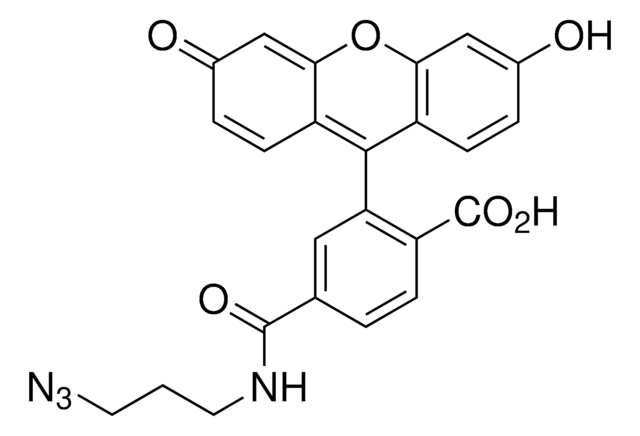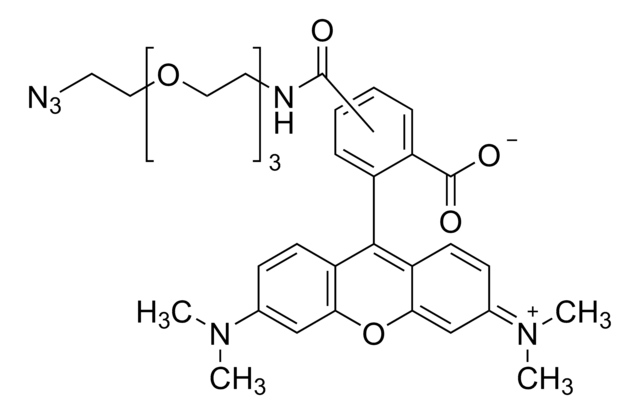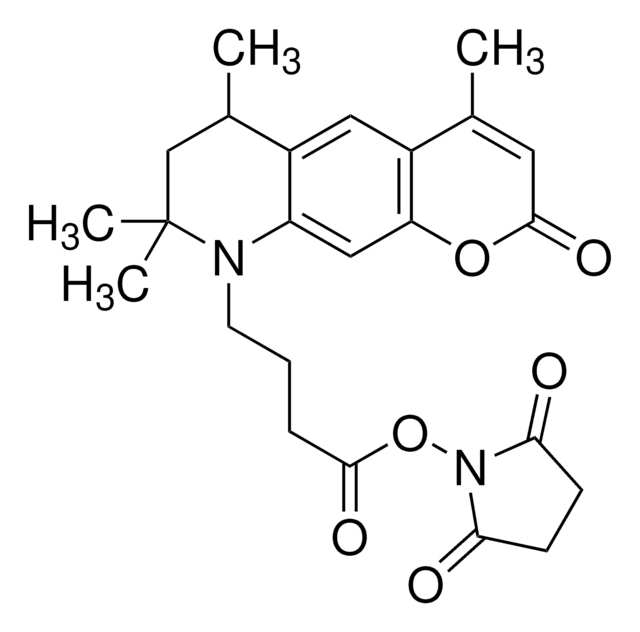68321
Atto 390 azide
BioReagent, suitable for fluorescence, ≥90% (HPLC)
About This Item
Productos recomendados
Línea del producto
BioReagent
Ensayo
≥90% (HPLC)
Formulario
solid
fabricante / nombre comercial
ATTO-TEC GmbH
λ
in ethanol (with 0.1% trifluoroacetic acid)
Absorción UV
λ: 380-384 nm Amax
idoneidad
suitable for fluorescence
temp. de almacenamiento
−20°C
cadena SMILES
CC(CC(C)(C)N1CCCC(NCCOCCOCCOCCN=[N+]=[N-])=O)C2=C1C=C(OC(C=C3C)=O)C3=C2
InChI
1S/C28H41N5O6/c1-20-16-27(35)39-25-18-24-22(17-23(20)25)21(2)19-28(3,4)33(24)9-5-6-26(34)30-7-10-36-12-14-38-15-13-37-11-8-31-32-29/h16-18,21H,5-15,19H2,1-4H3,(H,30,34)
Clave InChI
FEBSRHTZZIMYNR-UHFFFAOYSA-N
Descripción general
The azide modification is suitable for reactions with alkyne groups (Huisgen reaction - “Click Chemistry“).
find more information here
Información legal
Código de clase de almacenamiento
11 - Combustible Solids
Clase de riesgo para el agua (WGK)
WGK 3
Punto de inflamabilidad (°F)
Not applicable
Punto de inflamabilidad (°C)
Not applicable
Elija entre una de las versiones más recientes:
¿Ya tiene este producto?
Encuentre la documentación para los productos que ha comprado recientemente en la Biblioteca de documentos.
Nuestro equipo de científicos tiene experiencia en todas las áreas de investigación: Ciencias de la vida, Ciencia de los materiales, Síntesis química, Cromatografía, Analítica y muchas otras.
Póngase en contacto con el Servicio técnico






